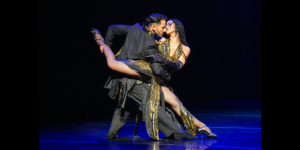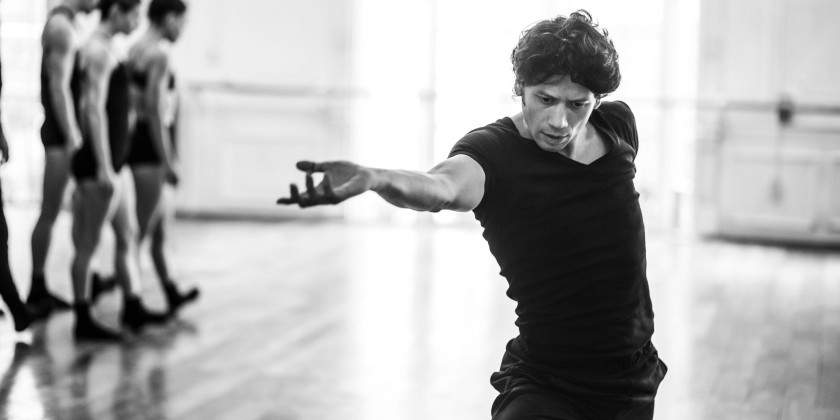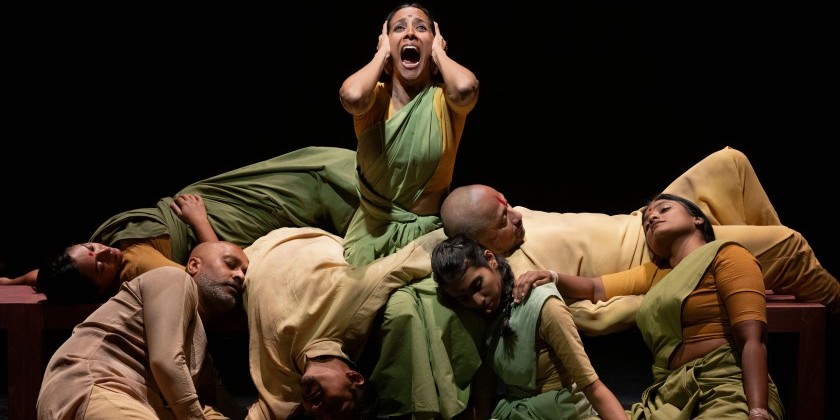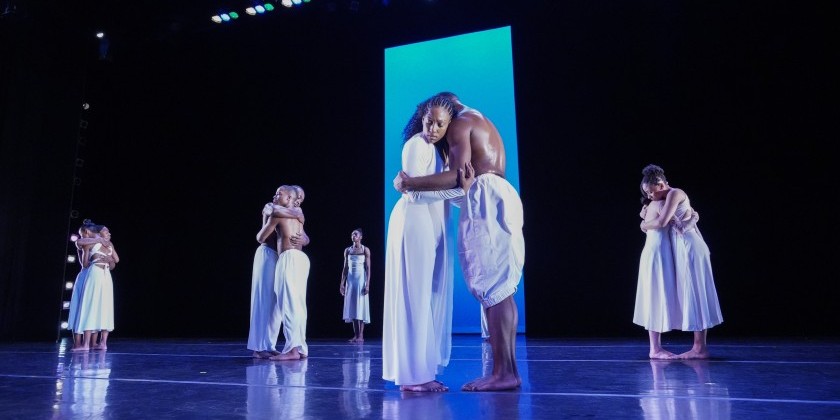IMPRESSIONS: "Shindig," a Social Gathering with Dance, by Forza Dance
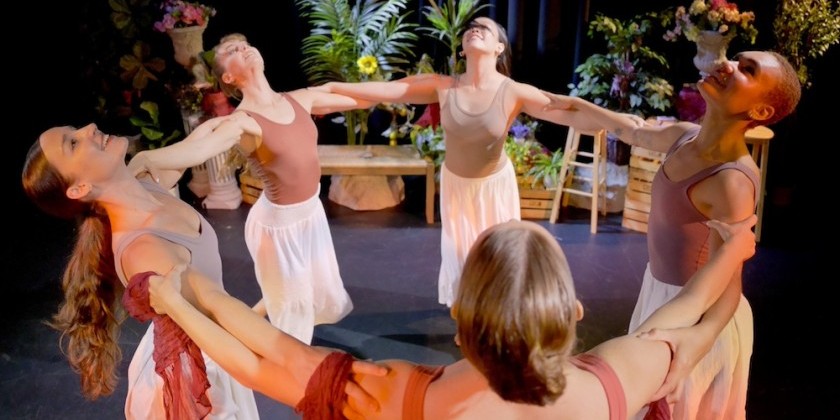
Featuring the world premiere of "La Tarantella"
Artistic Director: Michaella Barron
Composer: Quinton Nennig
Dancers: Gabrielle DiNizo, Abby Nguyen, Maddy Hall, Araya Morris, Micah McKee
Visual Artist: Sofia Riley
Shindig Vibe Set: DJ Scenick Roots
Pre-show Keys: John Carroll
Forza Dance’s second annual Shindig, a social gathering with dance, superbly captures the momentum of the multi-faceted arts organization. Forza, founded by choreographer Michaella Barron in 2020 and formerly named ‘Artists After Hours,’ creates non-traditional performance experiences which build authentic connections between audience and performer through affordable classes, workshops and programs.
Forza, meaning “power or strength” and “a way of approaching life with passion and willpower” in Italian, brings people together in celebration of art, movement, and human connection.
The evening, taking place in the modern, intimate Brooklyn Art Haus, features an art gallery, raffle, and the world premiere of Barron’s first evening-length work, La Tarantella.
Collage and graphite works by visual artist Sofia Riley fill the gallery adjacent to the performance space. Her pieces speak to womanhood, later to be echoed in the dance performance. La Tarantella’s score for piano, masterfully composed by Quinton Nennig, also sits on display. Attendees can also participate in a Forza Dance raffle and purchase merchandise.
After an hour of mingling, viewers take their seats in the theater, which are arranged in a semi-circle. Upstage, an abundance of lush, green plants and succulents bloom. Before the performance, audience members are invited to improvise in the center of the round while pianist John Carroll plays a pre-show set.
La Tarantella celebrates Barron’s Italian heritage through the lens of five compassionate, captivating women who embody distinct feminine archetypes. The narrative, set in a coastal village in ancient Italy, explores tradition and deviation as each character navigates the weight of her community’s expectations. This exploration manifests through the metaphor of a spider bite which spreads through their group. The bite offers a metamorphosis, and the dance offers a cure: each woman endures her own chaotic path while recognizing her aspirations. The women ask themselves who they are, who they want to be, and how they can relate to one another while still upholding their community’s strength.
A blend of the Italian folk dance — the titular Tarantella — and contemporary dance movement build the work’s vernacular. The dancers’ clarity in movement captures their assuredness and grit. Viewers could witness the dance’s specificity from many angles within the circular seating arrangement, which compliments the dance’s whirling spatial patterns.
Dancers Gabrielle DiNizo, Abby Nguyen, Maddy Hall, Araya Morris, and Micah McKee begin the performance clad in long, eggshell skirts layered over unitards and introduce their camaraderie through celebratory folk dances. They grasp wrists and toss their heads back in jubilation, creating circular floor patterns that trickle into duet and trios.
Their harmonious energy fades subtly, particularly as Nguyen staggers away from the group as though afflicted by a dark internal presence. Her comrades console her, and they begin to freeze while the five characters — The Wise Woman (Morris), The Maiden (McKee), The Wild Woman (DiNizo), The Mystic (Nguyen), and The Mother (Hall) — take turns dancing alone. Before long they reunite in another communal dance and their once harmonious existence dissolves into something more foreboding.
The cascading Tarantella warps into a tangled atmosphere. The dancers execute linear, clear shapes — lifted chests, torso contractions, and deep lunges. All shed their long skirts except DiNizo, who re-enters wearing a short, pale slip. Through separation of movement and costume, her Wild Woman character appears to be the last of the community clinging to innocence — yet in time, she accepts the community’s metamorphosis, emphasized by a sweeping duet with Nguyen.
The conclusion of the piece echoes its opening. The five women, clad in their skirts once more, reunite in a final celebratory Tarantella, joined by guest performers who play tambourines. The larger group creates the feeling that their community has expanded and will continue to grow in harmony.
La Tarantella speaks to a literal and figurative shedding: of traditions no longer needed, of a past no longer clung to. While celebrating Italian culture and community, it emphasizes the importance of trusting one’s self as well as one’s support system.







